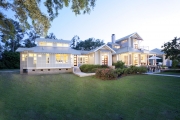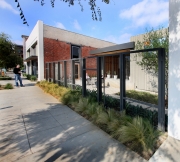Shipping Containers: Creative Architecture at Work
Most of us don’t ever really think about shipping containers unless we work in logistics or caught the second season of The Wire. They have been steadily making their way into the architectural world -- their low cost and ambulatory nature making them appropriate in a variety of contexts, such as upscale housing and small workplaces or getaways. The creativity of these spaces emerges with the challenge of fitting design into a box, quite literally. Here, however, we will examine that creativity a bit further in a few other uses, while discussing shipping container design with Pittsburgh-based architect Gary P. Moshier of Moshier Studio.











